How the death penalty was carried out in Russia
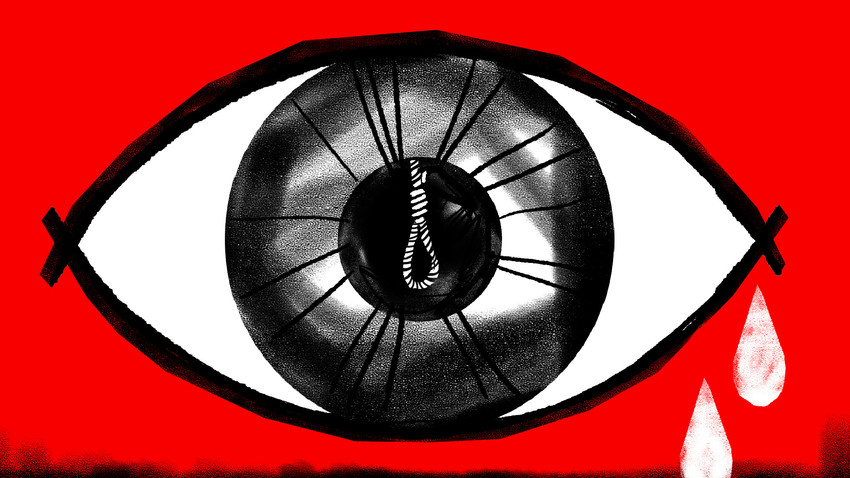
Throughout Russia's history, hundreds of thousands of people were executed, in many, many different ways.
Natalya NosovaThe last time the death penalty was carried out in Russia was in 1996, more than 20 years ago. According to some reports, the last person to be executed was serial killer Sergey Golovkin, convicted of raping and murdering more than 30 boys - he was executed by firing squad in August of that year.
According to other sources, another, unnamed, criminal was the last person to be executed in September 1996. In any case, in April of 1997, Russia, upon joining the Council of Europe, signed Protocol No.6 to the Convention for the Protection of Human Rights and Fundamental Freedoms, which banned the implementation of the death penalty in peacetime. Since then, Russia has had a moratorium on capital punishment.
Twenty years without the death penalty is a tiny period of time compared with the centuries during which the Russian state, in one form or another, eliminated those who had either committed grave crimes or been regarded as undesirable by authorities. So, who was put to death, for what crimes, and how was capital punishment carried out?
Execution through outsourcing
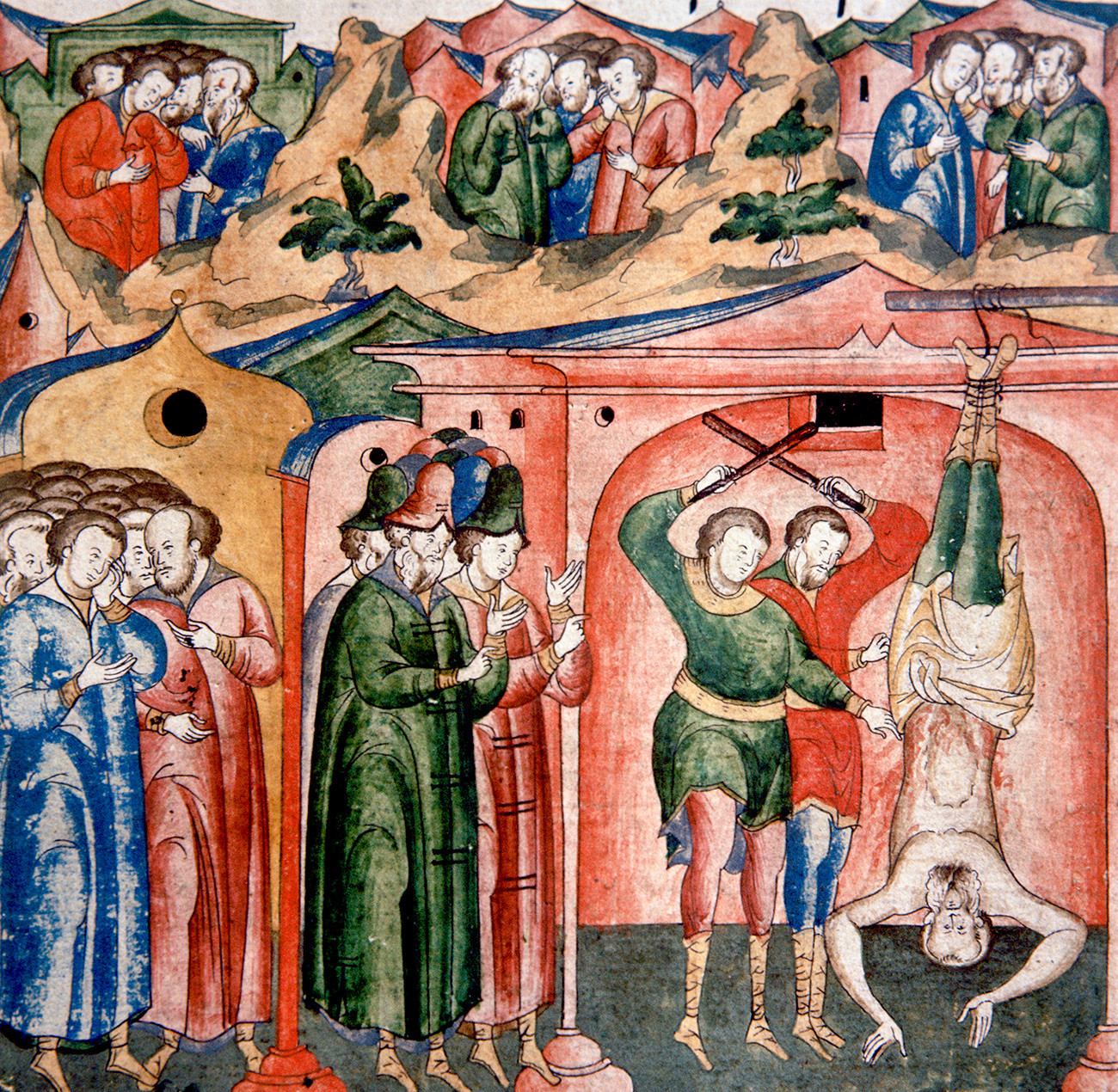
"The execution of a Boyarin" painting shows a nobleman being executed.
Mikhail Filimonov/SputnikAs was the case throughout the world, people were put to death in Russia from ancient times, including for punitive purposes. In the Middle Ages, when clan or tribe customs were applied instead of a legal system, blood vendettas were the norm of life – for murder, the family of the victim had the right to take the life of the murderer.
The first record of Slavic law, the 14th-century Russkaya Pravda legal code, proclaimed: "If a man kills a man, a brother is to be avenged by a brother, or a father, son, cousin or the son of the brother." The authorities preferred not to carry out executions – according to the legal code, if the victim had no relatives, it was enough for the murderer to pay a fine to the prince's treasury to redeem themselves.
The methods of execution were not specified by legislation at the time: оudging by the chronicles, they depended on the cruelty and imagination of those in charge of executions. After Kievan Rus adopted Christianity in 988, some pagan priest-soothsayers, who refused to convert to Christianity, were burned alive. Prince Iziaslav, having stormed Kyiv, ordered that 70 men first be blinded and then executed. Those with the weapons decided who should be executed and who should be spared.
Ruthless rulers
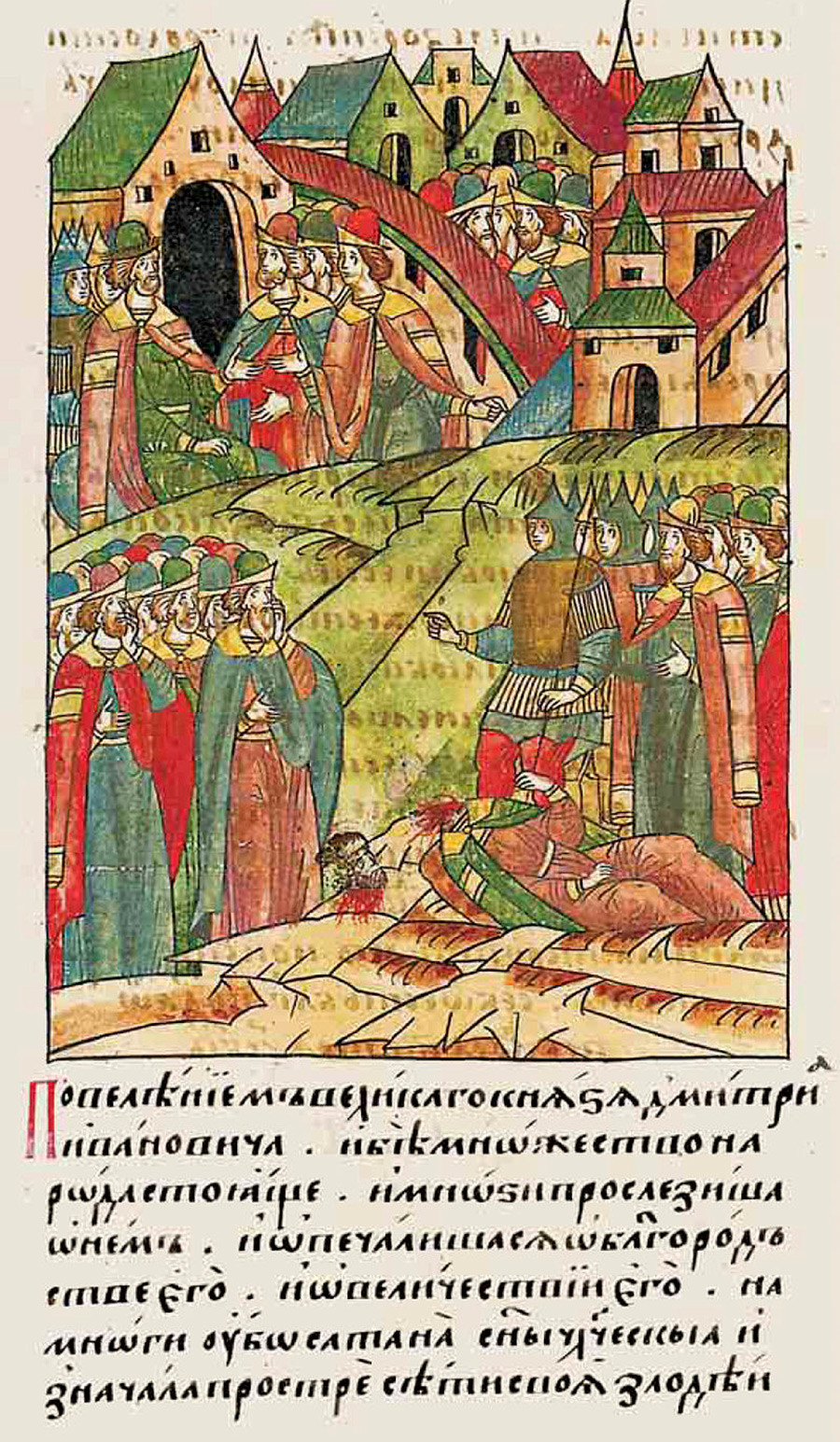
One of the first public executions in Russia's history depicted in a chronicle.
Public domainAs the power of the Moscow princes, who had been adding more new territory to their grand duchy, grew stronger, the law became more codified and this had an impact on the death penalty. The Dvinskaya Gramota [charter] of 1398 stipulated that thieves caught stealing for a third time were to be hanged. And it was now the central authorities that dealt with these matters.
Appetite comes with eating, as they say – and, as time went on, the Grand Duchy of Moscow specified more and more crimes punishable by the death penalty. Ivan III's Sudebnik code of law of 1497, introduced the death penalty for "theft, or robbery, or murder, or malicious slander for the purpose of extortion". But under Ivan III, those whom he regarded as simply undesirable were also executed: for example, “heretics” were burned alive.
A sadist on the throne
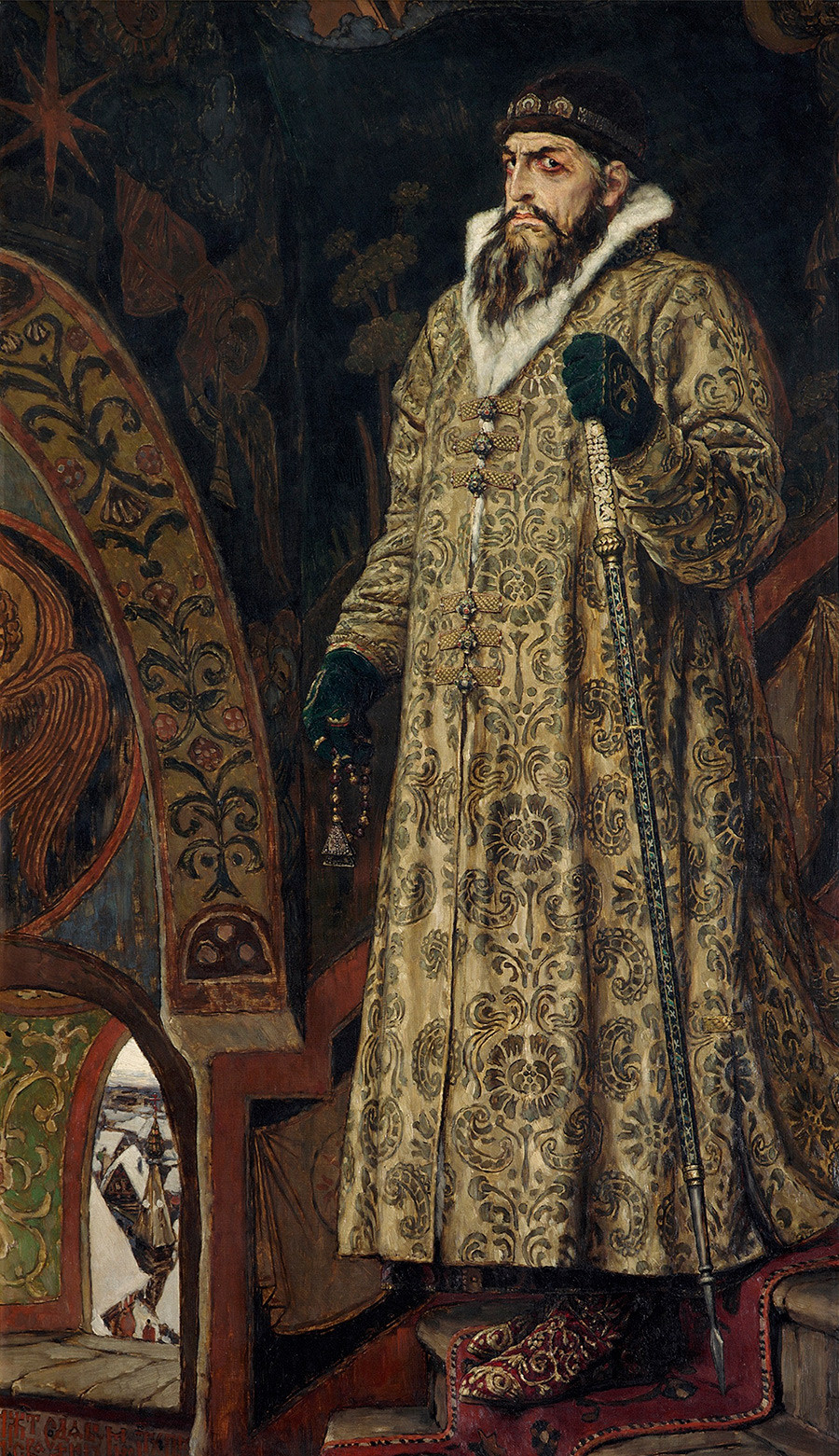
Ivan the Terrible was one hell of a ruthless monarch, who sometimes ordered to boil his enemies alive.
Viktor Vasnetsov; The Tretyakov GalleryBut it was Ivan III's grandson, Ivan IV, known as Ivan the Terrible (who ruled between 1533 and 1584), who took the death penalty, as well as torture, to a new level of barbarity. "We have always had the freedom to reward our bondsmen, as well as to execute them…," wrote the first Russian tsar, referring to all his subjects as "bondsmen". During the period of Oprichnina [mass repression of the boyars] at least 4,500 people were executed.
Apart from the usual beheadings and hangings, quartering – whereby the body of a criminal was cut into pieces – became widespread. If an execution was "mild", first the head was cut off; otherwise, the victim was beheaded at the end, in order for him to endure the torture first. Impalement was also exercised: An executioner's special skill was to ensure that the pole went through the body of a victim without touching his vital organs so that he didn't die too quickly. With regards to traitors, Ivan IV ordered that they should be cooked in water, wine or oil until they died.
The tsar was not averse to inventing his own particularly excruciating methods of execution. Thus, historian Vladimir Ignatov in his book, Executioners and Executions in the History of Russia and the USSR, writes that "once, the tsar ordered that Voevoda [Governor] Nikita Kazarinov, who had taken monastic vows, be tied to a barrel of gunpowder and blown up, with the tsar claiming that monks were angels and should fly to the sky".
Executions the Romanov way
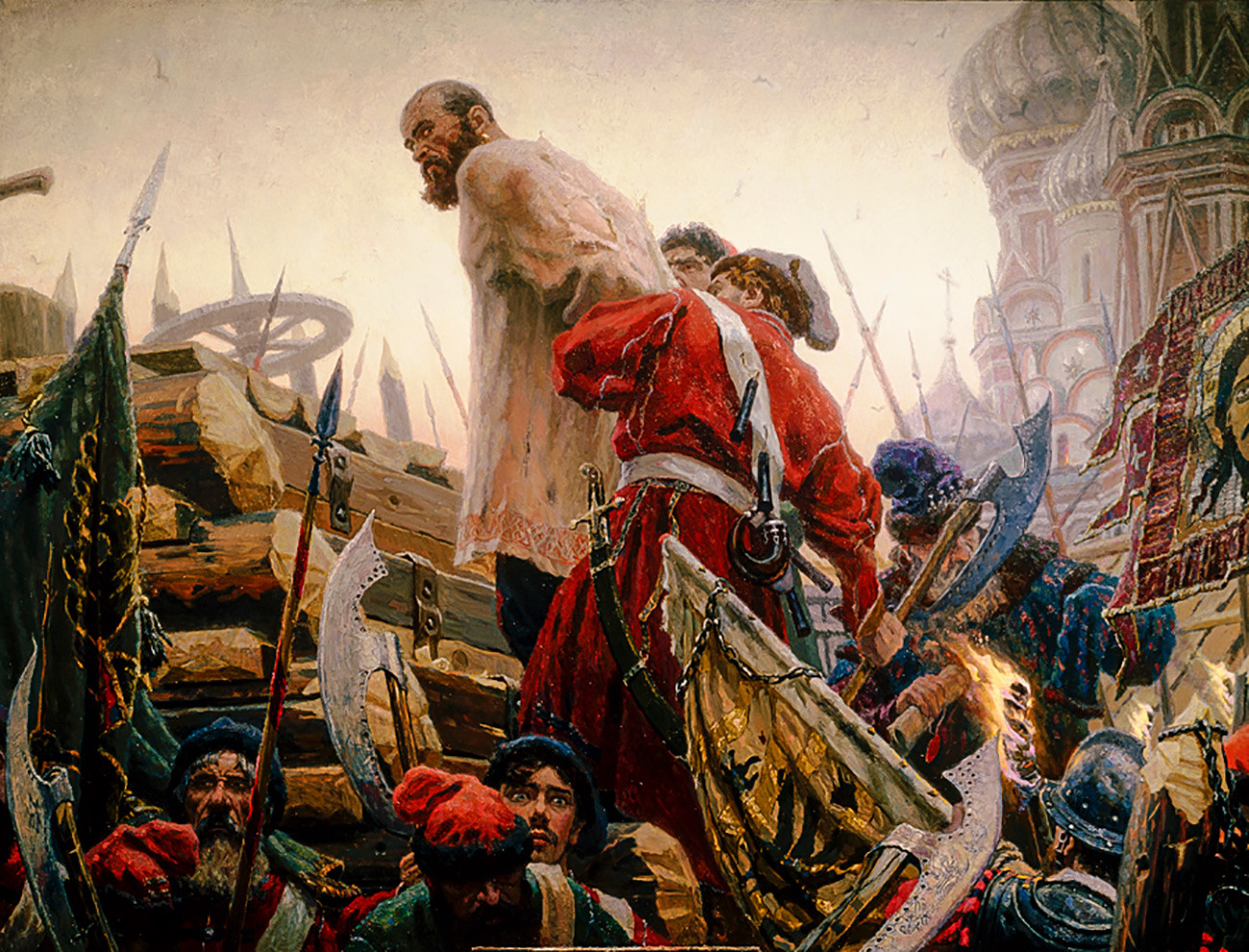
"Stepan Razin", a painting depicting the leader of a peasants revolt.
Following the anarchic Time of Trouble (1598-1613), a new dynasty came to power in Russia through the Romanovs, but the trend towards increasing codification and simultaneous entrenchment of the death penalty remained unchanged. The Council Code of 1649, the main document of Russian law for the subsequent 200 years, now prescribed the death penalty for 60 types of offenses.
The officially prescribed types of punishment included, for example, burning alive for blasphemy. "If someone denigrates God… the blasphemer, once exposed, should be executed by being burned alive." Counterfeiters, apostates, rapists, murderers and thieves - all were to be executed. For minor misdemeanors, culprits were flogged with a whip known as the knout.
According to civil servant Grigory Kotoshikhin, 50 professional executioners operated in Moscow during the reign of Aleksey Mikhailovich Romanov (1645-1676). And they had their work cut out: Kotoshikhin notes that 7,000 people were executed.
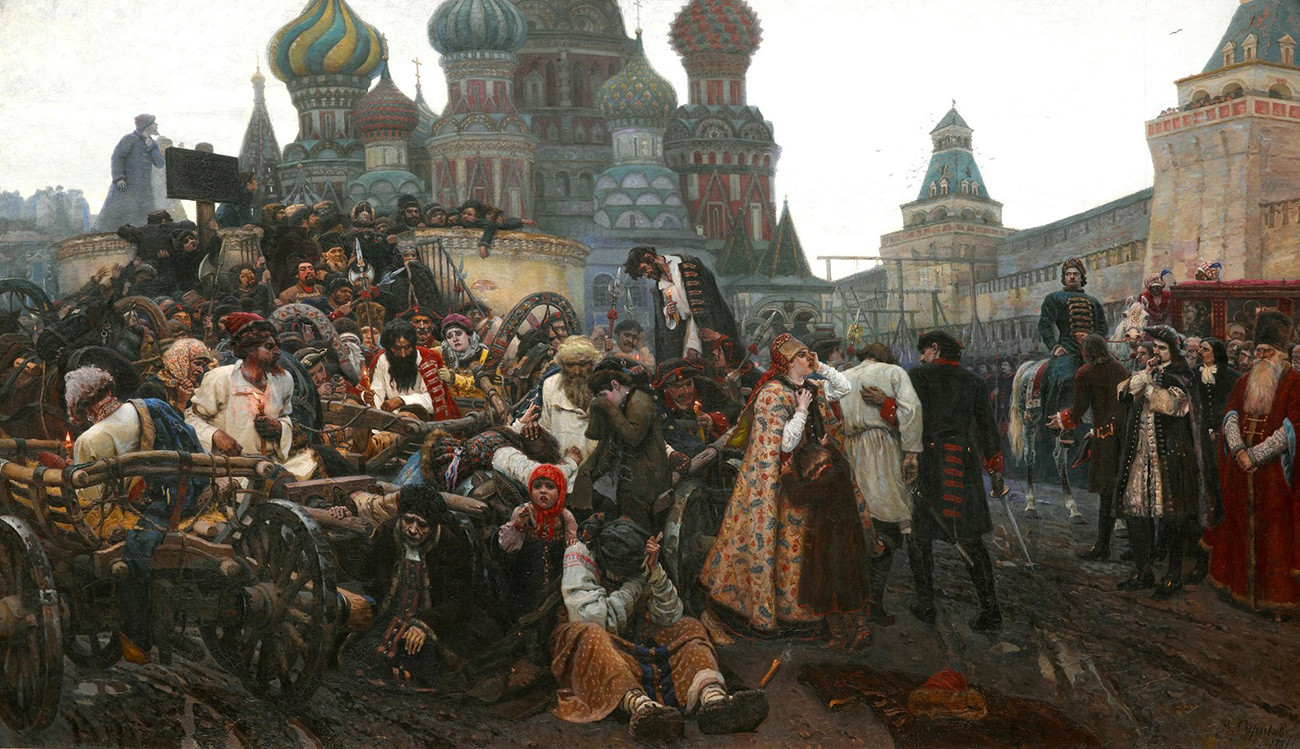
"The Morning of the Streltsy Execution" painting.
Vasily Surikov / The Tretyakov GalleryBlood also spilled during the reign of Aleksey's son, Peter I (1682-1725). Having suppressed the Streltsy Uprising in 1698, Peter severely punished the tsarist "old guard". For 10 days, executions of the Streltsy took place in Moscow following brutal torture: According to historian Nikolay Kostomarov, "in the Red Square, four had their arms and legs broken on the wheel, others were beheaded and the majority were hanged". Peter personally cut off the heads of five Streltsy.
A respite from death
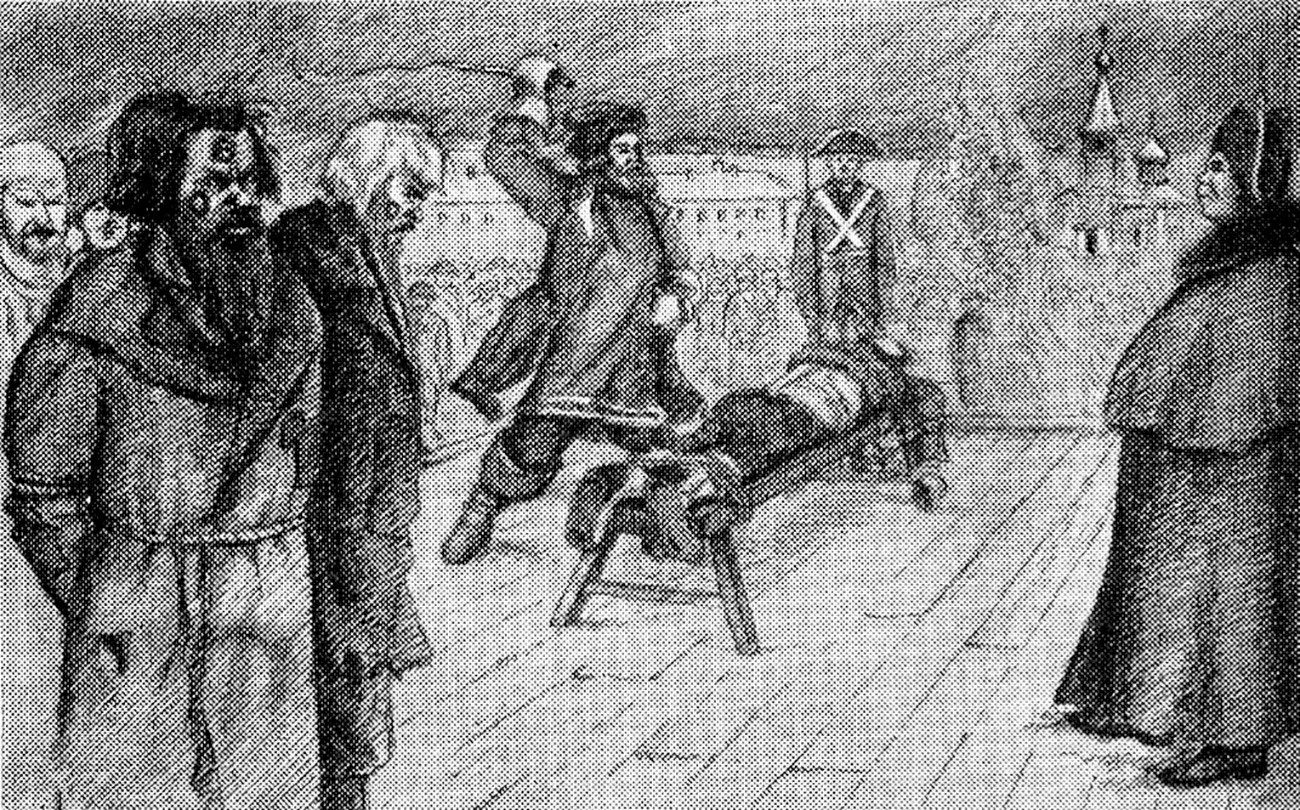
Criminals being branded with iron stamps.
Public domainPeter's initial successors continued the practice of carrying out executions often, and on a large scale, although the eccentricity of Ivan the Terrible was a thing of the past – from the 18th century, there were mainly beheadings, hangings and executions by firing squad. Everything changed when Peter's daughter Elizabeth (who ruled from 1741 to 1762) ascended to the throne. The Empress was a staunch opponent of the death penalty and didn't sign a single death sentence during her rule.
According to historian Elena Marasinova, a pious Elizabeth Petrovna didn't want to have the sin of murder on her conscience through the signing of death sentences. "The moratorium on the death penalty in Russia reflected not the ideals of the enlightenment, but medieval religiosity, on the one hand, and, on the other, the autocrat's confidence that state law and the autocrat's will were the same thing," says Marasinova. It wasn’t of much help to criminals, who otherwise would have been executed: they were branded with iron stamps, had the cartilage dividing their nostrils ripped out and were exiled to do hard labor for the rest of their lives.
Nevertheless, the 20-year hiatus in executions played an enormous role in humanizing the authorities. "In just two decades, the ruling and educated elite was already quite prepared to debate the desirability of capital punishment," writes Marasinova.
Subsequently, under the Romanovs, mainly state criminals who made attempts on the life of the Emperor or threatened state power were executed: they included the pretender Yemelyan Pugachev, five leaders of the Decembrist Revolt, and the revolutionaries who assassinated Alexander II. From 1826 to 1905, only 525 people were executed in Russia. However, the 20th century put an end to such humanism.
Civil War
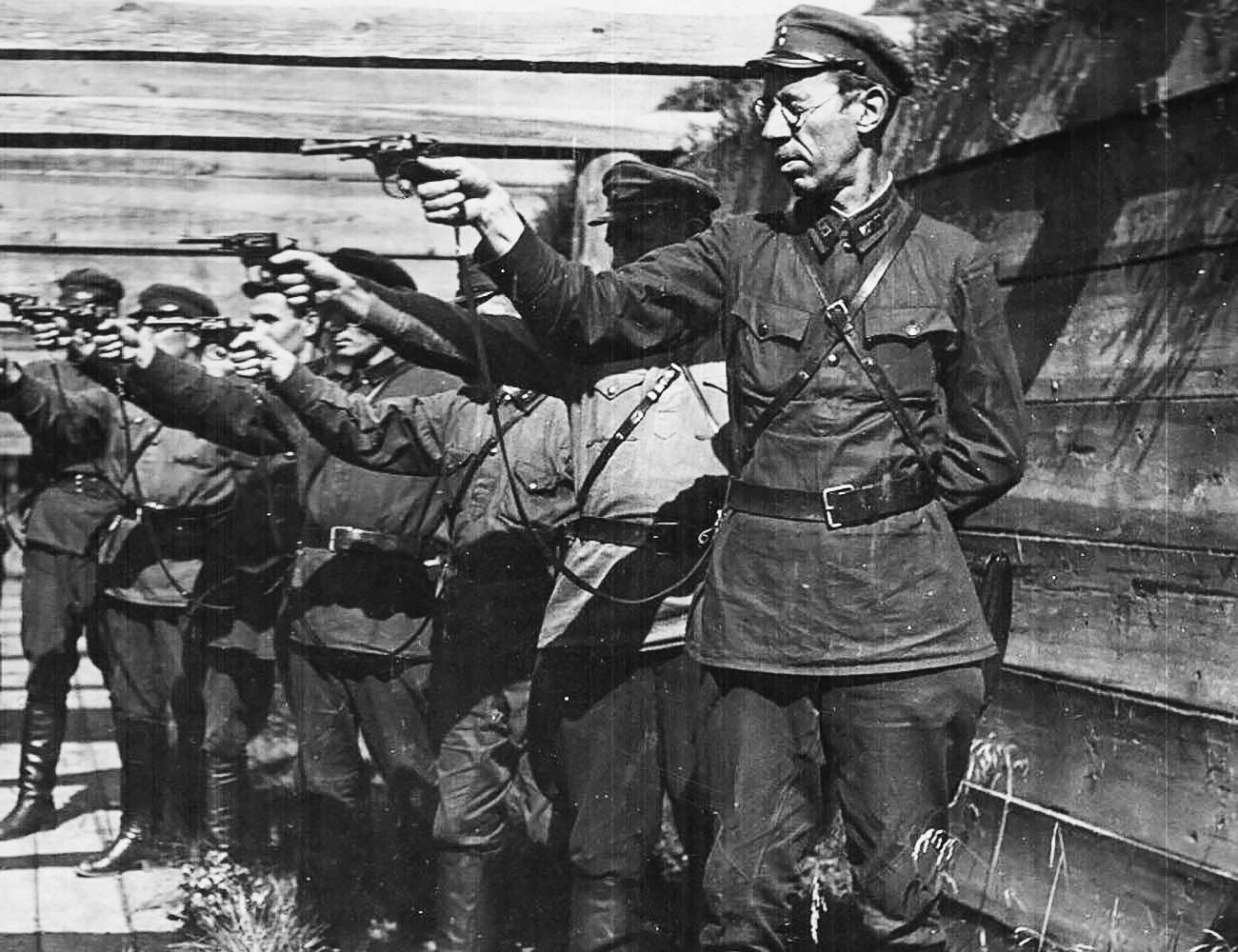
A Soviet firing squad.
Public domainBetween 1905 and 1910, the government of Nicholas II executed over 3,700 people, mainly by hanging – it is how the authorities dealt with the uprisings that swept through the empire. "The reaction of Russian society to the executions was bitter… Poor Russia, if only it knew what was awaiting it!" writes Vladimir Ignatov.
True, after the October Revolution in 1917, which brought the Bolsheviks to power, violence reached an entirely new level. Having abolished the death penalty in October 1917, by February 1918, Lenin's government had not just brought back capital punishment but allowed for class enemies to be executed even without trial.
"Enemy agents, speculators, thugs, hooligans, counter-revolutionary agitators and spies are to be shot at the crime scene," read the decree Socialist Homeland is in Danger! Under another decree, On Red Terror, anyone linked to anti-Bolshevik forces in any way was to be shot.
"Following the promulgation of the decree On Red Terror, an era of terror was launched that has no precedent in history," Ignatov points out. The Bolsheviks sought to build an ideal new society and during the Civil War (1918-1922) systematically eliminated anyone who didn't share their ideals. It is impossible to give an accurate figure of how many people were executed during that period – particularly bearing in mind that the Bolsheviks, as well as their opponents, carried out executions without trial or documentary record. According to different estimates, the figures vary from 50,000 to over a million.
Executioners by trade
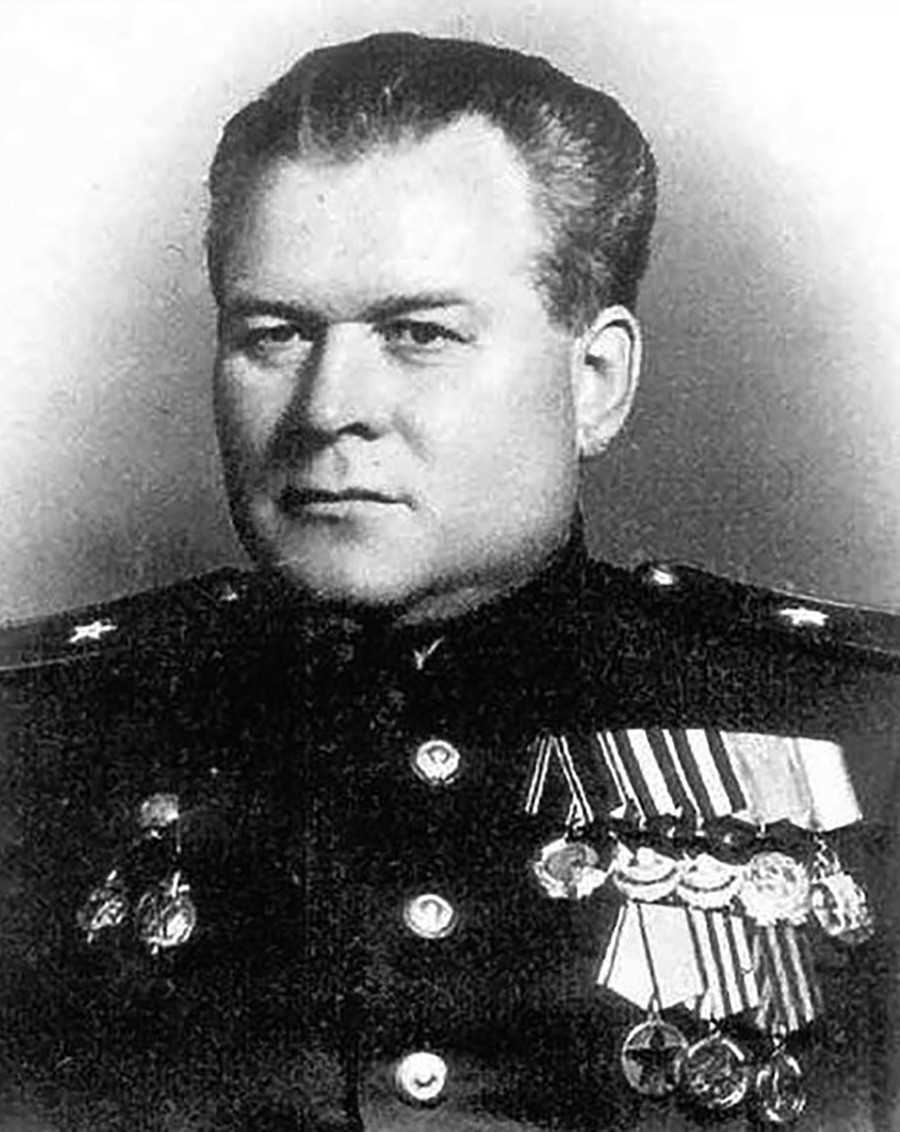
Vasily Blokhin, the most effective executioner of the NKVD, who alone shot at least 5,000 people.
Public domainFollowing the relative lull of the second half of the 1920s, a new wave of bloody terror swept the USSR in the 1930s, when Joseph Stalin concentrated all power in his hands. According to the most conservative estimates, between 1930 and 1953, more than 780,000 people were executed. Under 1935 legislation, it was permitted to execute people from the age of 12.
During this terrible period, super-executioners came onto the scene – members of the OGPU/NKVD/MGB [precursors of the KGB] who, day in and day out, carried out death sentences in conveyor belt fashion. The time of Ivan the Terrible's fantasies were over: As a rule, people who were arrested were routinely beaten upon detention, tortured during interrogation and then executed by firing squad (although some were still hanged).
One of the most notorious record holders for executions was Vasily Blokhin, who personally executed several thousand people (between 5,000 and 15,000, according to different estimates). A former colleague recalled that, to carry out the executions, Blokhin would change from his NKVD uniform into an executioner's costume: a leather apron, leather gloves and high boots. Blokhin rose to the rank of state security general and died from natural causes in 1955.
"It goes without saying that we drank vodka till we passed out. Whatever anyone might say, it wasn't an easy job. We got so tired that, at times, we could hardly stand on our feet. And we washed with eau de cologne. Up to the waist. Otherwise it was impossible to get rid of the smell of blood and powder," is how a subordinate recalled working under Blokhin's supervision. Many Cheka (secret police) agents were not as lucky as Blokhin – owing to constant internal purges, they themselves often ended up facing an execution squad.
End of the death penalty
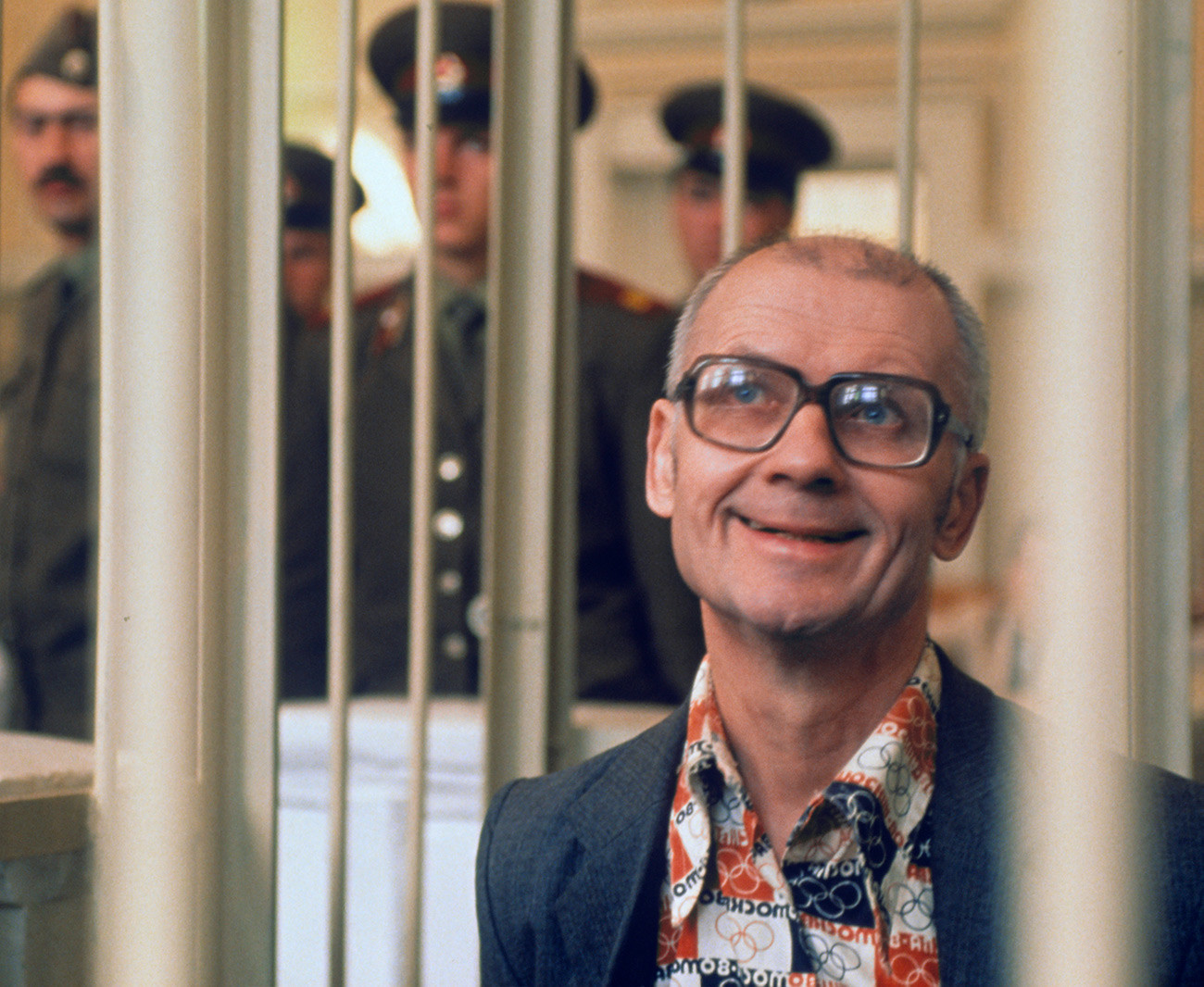
Andrei Chikatilo, one of the most infamous Russian serial killers, was executed in February 1994 - one of the last executions in Russia.
Vladimir Vyatkin/SputnikAfter Stalin's death in 1953, the death penalty was carried out on far fewer occasions, but during the whole of the Soviet period, it remained an instrument of control over society. Between 1962 and 1989, the USSR’s judicial bodies passed over 24,000 death sentences, of which just under 2,500 resulted in pardons. Executions were exclusively by firing squad.
In the new Russia that emerged after the fall of the Soviet Union in 1990, capital punishment has been applied on a much smaller scale: There were 163 death sentences between 1991 and 1996. Since then, as has already been mentioned, there has been a moratorium on the death penalty. The government has consistently rejected the possibility of bringing it back. "Experts believe that tougher punishment doesn't lead to the eradication of crime or a decrease in the level of crime," Vladimir Putin explained in 2013.
If using any of Russia Beyond's content, partly or in full, always provide an active hyperlink to the original material.
Subscribe
to our newsletter!
Get the week's best stories straight to your inbox